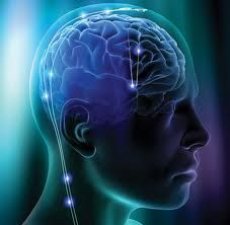New publications
Scientists have built a "flavor map" of the brain
Last reviewed: 30.06.2025

All iLive content is medically reviewed or fact checked to ensure as much factual accuracy as possible.
We have strict sourcing guidelines and only link to reputable media sites, academic research institutions and, whenever possible, medically peer reviewed studies. Note that the numbers in parentheses ([1], [2], etc.) are clickable links to these studies.
If you feel that any of our content is inaccurate, out-of-date, or otherwise questionable, please select it and press Ctrl + Enter.

Taste sensations in our brain are not controlled by a complex of multi-profile neurons, as was previously believed, but by a set of clusters of nerve cells responsible for a particular taste.
Taste sensations follow the same path as visual, auditory and other sensations - from the receptor cell to a specific area in the brain, the taste analyzer. It is assumed that each taste (bitter, salty, sweet, etc.) corresponds to an individual receptor. In experiments on mice, the animals' reaction to artificial stimulation of "bitter" receptors differed from that to stimulation of "sweet" receptors. But what happens next, where the nerve impulse from the taste receptor goes, remained unclear for a long time. The areas of neurons excited by different taste sensations overlapped each other, which forced scientists to imagine the taste analyzer as a group of nerve cells with a wide, non-specific field of action.
Nevertheless, the presence of strictly specialized neurons did not give researchers peace: is the signal really transmitted from a specific receiver to a "general" analyzer? Scientists from the Howard Hughes Medical Institute (USA) introduced a calcium-sensitive dye into the neurons of mice, which began to fluoresce in response to changes in the calcium ion content. The activity is accompanied by the pumping of ions between the cell and the external environment, and in response to taste irritation, scientists could see exactly which neurons in the brain "felt" it. The method made it possible to simultaneously monitor the state of hundreds of nerve cells.
And it turned out that when a mouse tasted something bitter, it led to the activation of a certain group of neurons, but if the animal switched to something salty, then in response, neurons located a few millimeters from the first, "bitter" ones woke up. And so with all taste sensations. As a result, the researchers managed to build a "taste map" of the brain with non-overlapping areas responsible for different tastes, which the authors write about in the journal Science.
Thus, taste sensations are no different from other sensations in terms of their final processing by the central analyzer. The same functional maps exist for other sense organs; thus, sounds of different pitches are distributed in the brain across different neural areas of the auditory analyzer. How these areas communicate, resulting in us feeling some complex taste, remains to be seen. Although advanced cooks and chefs would probably not mind speeding up research in this direction.
